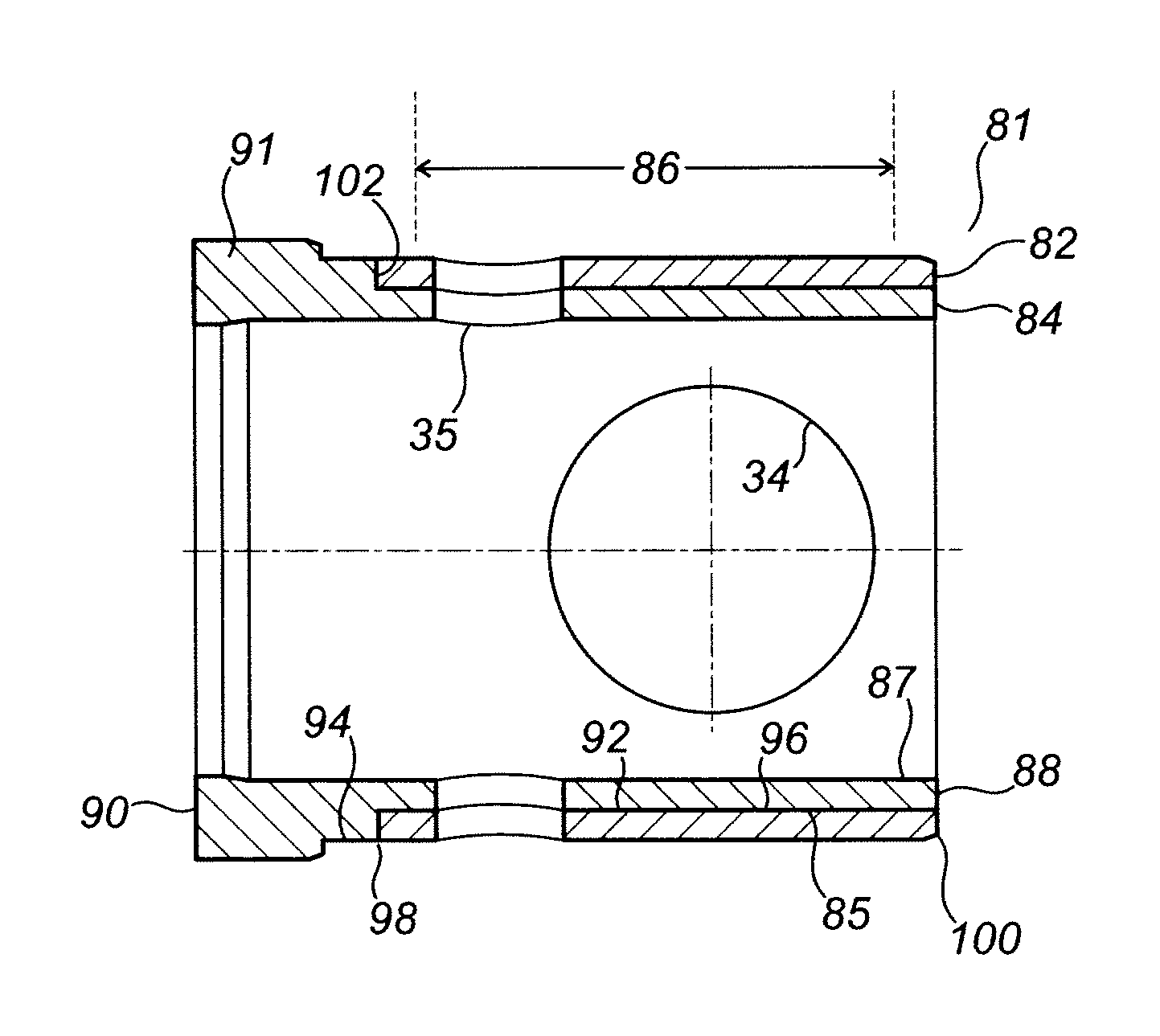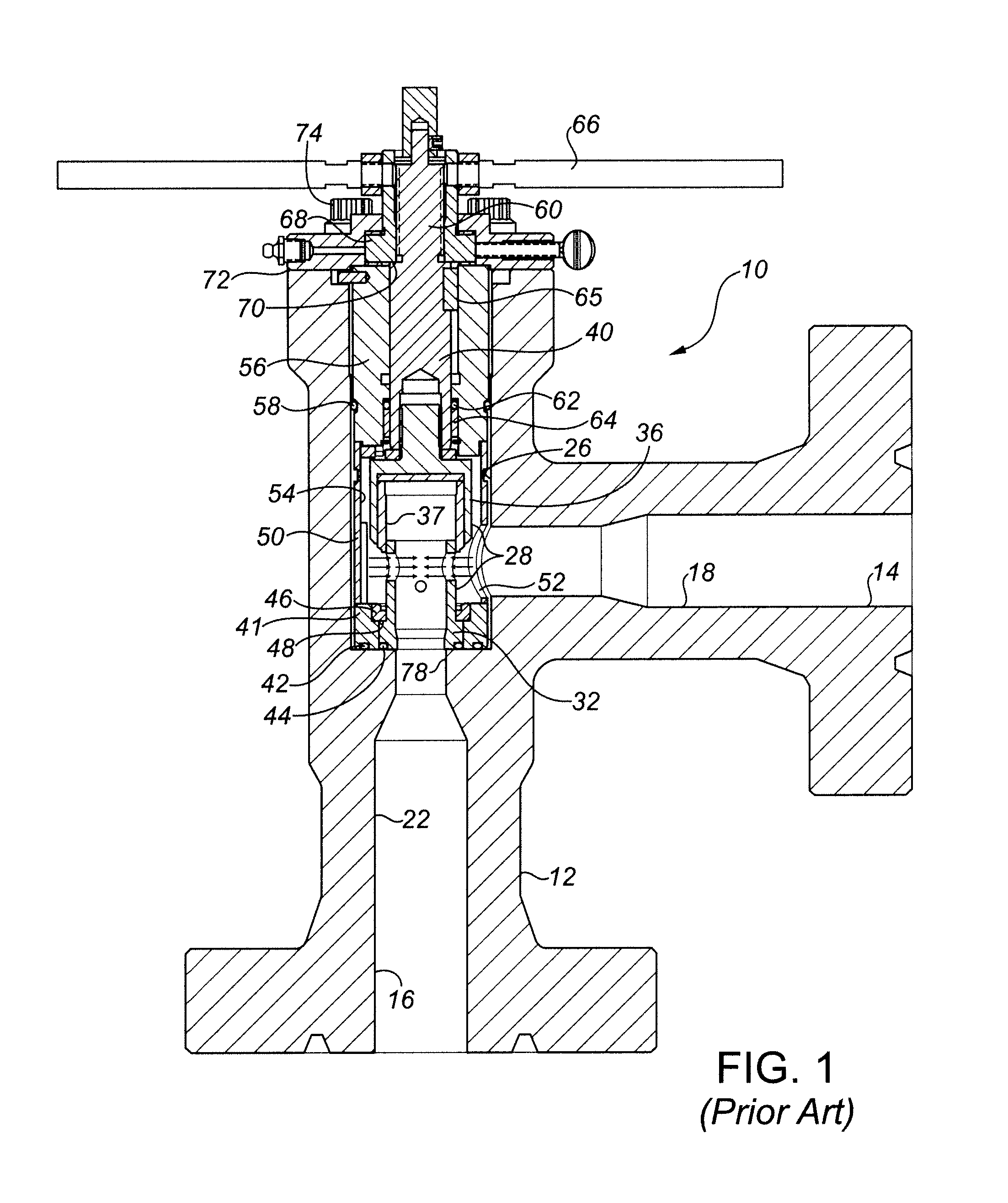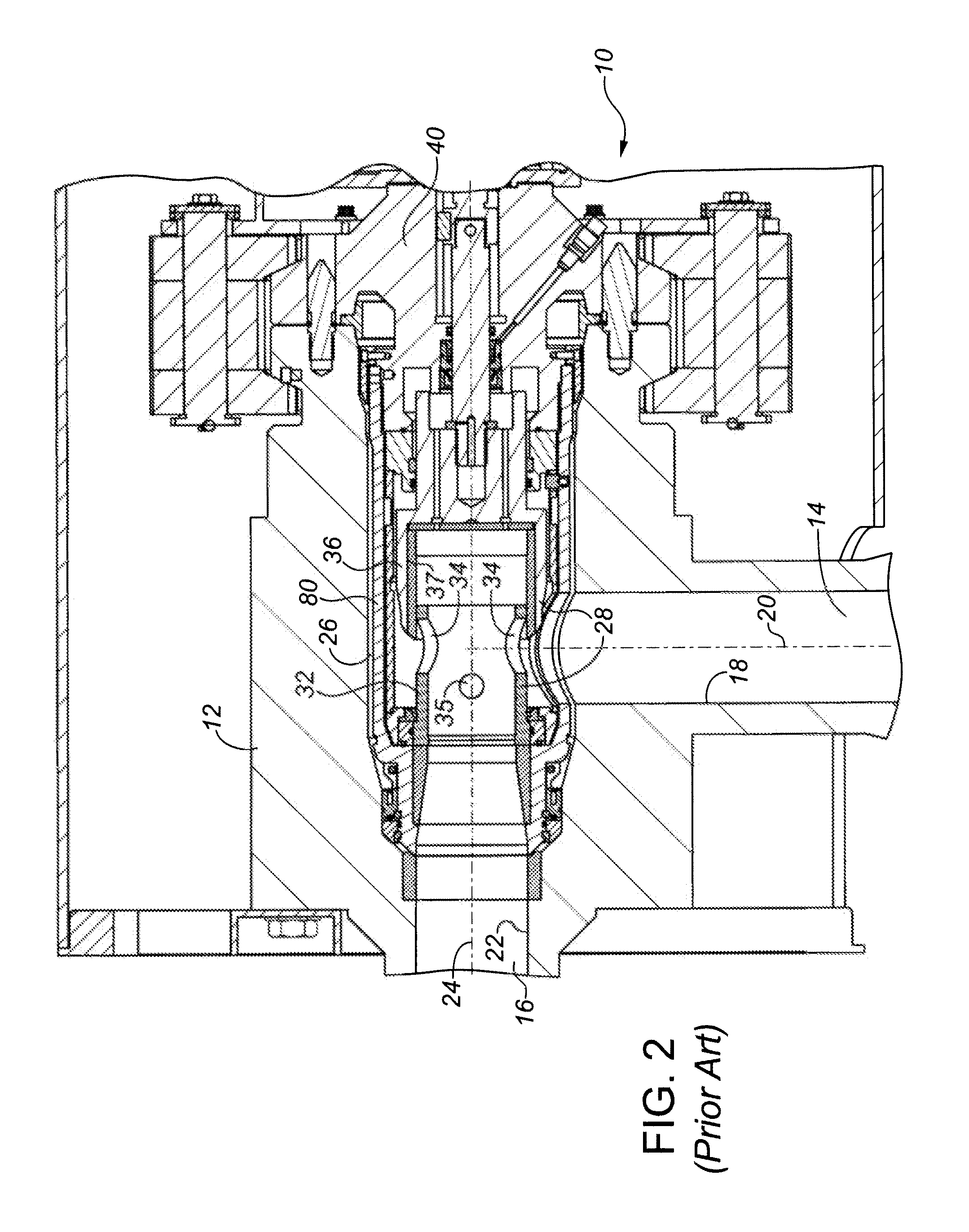Cage valve with flow trim for reduced fracturing
a flow trim and valve body technology, applied in the field of cage valves, can solve the problems of valve trim failure, flow trim fracture, downstream equipment pressurization, etc., and achieve the effect of reducing fracturing
- Summary
- Abstract
- Description
- Claims
- Application Information
AI Technical Summary
Benefits of technology
Problems solved by technology
Method used
Image
Examples
Embodiment Construction
[0037]As used herein and in the claims, the word “comprising” is used in its non limiting sense to mean that items following the word in the sentence are included and that items not specifically mentioned are not excluded. The use of the indefinite article “a” in the claims before an element means that one of the elements is specified, but does not specifically exclude others of the elements being present, unless the context clearly requires that there be one and only one of the elements.
[0038]The flow trim and cage component may be used in any external sleeve (flow collar) and inner cage valve design, and not merely in the valves of the type illustrated in FIGS. 1 and 2. For example, the cage component may be adapted for use with other known external sleeve inner cage valves, for example cage valves in which the cage component is fitted at or into the outlet of the valve, for example by threading. The cage component may be adapted for use in external sleeve inner cage valves in whi...
PUM
| Property | Measurement | Unit |
|---|---|---|
| inner diameter | aaaaa | aaaaa |
| inner diameter | aaaaa | aaaaa |
| pressure | aaaaa | aaaaa |
Abstract
Description
Claims
Application Information
 Login to View More
Login to View More - R&D
- Intellectual Property
- Life Sciences
- Materials
- Tech Scout
- Unparalleled Data Quality
- Higher Quality Content
- 60% Fewer Hallucinations
Browse by: Latest US Patents, China's latest patents, Technical Efficacy Thesaurus, Application Domain, Technology Topic, Popular Technical Reports.
© 2025 PatSnap. All rights reserved.Legal|Privacy policy|Modern Slavery Act Transparency Statement|Sitemap|About US| Contact US: help@patsnap.com



